Results 7,331 to 7,340 of 12091
Thread: Anandtech News
-
09-07-17, 09:09 AM #7331
Anandtech: NVIDIA Ships First Volta-based DGX Systems
This Wednesday, NVIDIA has announced that they have shipped their first commercial Volta-based DGX-1 system to the MGH & BWH Center for Clinical Data Science (CCDS), a Massachusetts-based research group focusing on AI and machine learning applications in healthcare. In a sense, this serves as a generational upgrade as CCDS was one of the first research institutions to receive a Pascal-based first generation DGX-1 last December. In addition, NVIDIA is shipping a DGX Station to CCDS later this month.
At CCDS, these AI supercomputers will continue to be used in training deep neural networks for the purpose of evaluating medical images and scans, using Massachusetts General Hospital’s collection of phenotypic, genetics, and imaging data. In turn, this can assist doctors and medical practitioners in making faster and more accurate diagnoses and treatment plans.
First announced at GTC 2017, the DGX-1V server is powered by 8 Tesla V100s and priced at $149,000. The original iteration of the DGX-1 was priced at $129,000 with a 2P 16-core Haswell-EP configuration, but has since been updated to the same 20-core Broadwell-EP CPUs found in the DGX-1V, allowing for easy P100 to V100 drop-in upgrades. As for the DGX Station, this was also unveiled at GTC 2017, and is essentially a full tower workstation 1P version of the DGX-1 with 4 Tesla V100s. This water cooled DGX Station is priced at $69,000.
Taking a step back, this is a continuation of NVIDIA’s rollout of Volta-based products, with DGX Volta meeting its Q3 launch date, and OEM Volta targeted at Q4. In the past months, the first Tesla V100 GPU accelerators were given out to researchers at the 2017 Conference on Computer Vision and Pattern Recognition (CVPR) in July, while a PCIe version of the Tesla V100 was formally announced during ISC 2017 in June.Selected NVIDIA DGX Systems Specifications DGX-1
(Volta)DGX-1
(Pascal, 2017)DGX-1
(Pascal, 2016)DGX Station GPU Configuration 8x Tesla V100 8x Tesla P100 4x Tesla V100 GPU FP16 TFLOPS 960 170 480 CPU Configuration 2x Intel Xeon E5-2698 v4
(20-core, Broadwell-EP)2x Intel Xeon E5-2698 v3
(16 core, Haswell-EP)1x Intel Xeon E5-2698 v4
(20-core, Broadwell-EP)System Memory 512 GB DDR4-2133
(LRDIMM)256 GB DDR4
(LRDIMM)Total GPU Memory 128 GB HBM2
(8x 16GB)64 GB HBM2
(4x 16GB)Storage 4x 1.92 TB SSD RAID 0 OS: 1x 1.92 TB SSD
Data: 3x 1.92 TB SSD RAID 0Networking Dual 10GbE
4 InfiniBand EDRDual 10Gb LAN Max Power 3200W 1500W Dimensions 866mm x 444mm x 131mm
(3U Rackmount)518mm x 256mm x 639mm
(Tower)Other Features Ubuntu Linux Host OS
DGX Software Stack (see Datasheet)Ubuntu Desktop Linux OS
DGX Software Stack (see Datasheet)
3x DisplayPortPrice $149,000 Varies $129,000 $69,000
More...
-
09-07-17, 12:09 PM #7332
Anandtech: ASRock's X10 IoT Router Now Available: 802.11ac, GbE, ZigBee, and IR
ASRock has started sales of their new smart connected home router, the X10. The new device supports not only 802.11ac Wi-Fi and Gigabit Ethernet like any modern networking router, but also supports ZigBee and IR to control various smart and home electronics as a connected home central hub.
The X10 and devices like it comes at an interesting inflection point for the consumer networking gear industry; nowadays, Wi-Fi is ubiquitous and basic routers are cheap, if not outright free from an ISP, pushing the overall market towards being highly commoditized. However farther at the edge of the market and consumer adoption, there are new technologies knocking the door, such as ZigBee and Z-Wave for smart home appliances as well as 802.11ad for wireless docking of laptops. While hubs for these devices can already be purchased seperately, standalone ZigBee and Z-Wave hubs/dongles cost about $100, slightly lowering attractiveness of home automation in general. As a result, demand for routers with ZigBee and Z-Wave is growing as a means of centralizing all of these network-related functions, and ASRock wants to capitalize on this with its new X10 product that supports ZigBee in addition to 802.11ac MU-MIMO.
The ASRock X10 AC1300 IoT router is based on an unnamed SoC from Qualcomm featuring four ARM Cortex-A7 general-purpose cores. When it comes to wireless capabilities of the device, it works over 2.4 GHz (400 Mbps) as well as 5 GHz (867 Mbps) bands using two 5 dBi high gain antennas to connect different devices simultaneously. As for hardware connectors, the X10 router has one 1 GbE WAN port, four GbE LAN ports, one USB 2.0 port for storage devices and one USB 3.0 port (for add-on).
As mentioned above, the ASRock X10 has integrated ZigBee radio that can connect to compatible smart home appliances (sensors, lighting, heaters, security systems, etc.) using a 250 Kbit/s channel and enable users to read/control those using special apps for Apple iOS and Google Android. Since there is a fleet of consumer electronics devices that use IR for controls, the developers of the X10 also equipped it with IR blasters as well. Obviously, in order to control things like TVs or conditioners using IR, the router has to be placed in direct line of sight with them, which may not always be optimal for various reasons, but that’s the price of added comfort.
Hardware capabilities of the ASRock X10 are not its only advantages since the company invested a lot in its software in a bid to make it a hub for a smart home. For example, X10-compatible apps controlling alarms of certain devices can send commands to the router based on geolocation of the owner. In addition, the owner can control the X10 and all of their smart and CE devices remotely.
ASRock’s X10 IoT router is available for pre-order from Amazon in the U.S. at $149.99, or can be bought from Newegg for $139.99. The ASRock X10 is not the only ZigBee-, IR- and remote management-supporting router on the market. An important thing about the X10 is that it comes from a mass-market manufacturer, which means that demand for routers with IoT features is growing rapidly.
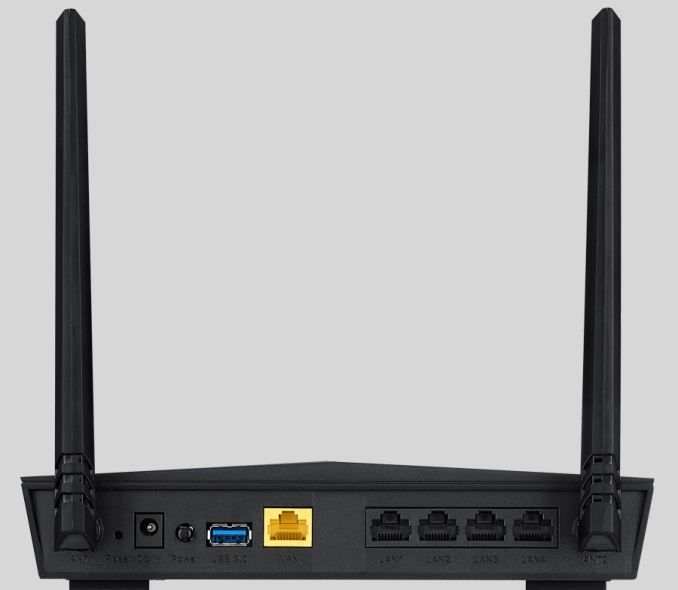
Gallery: ASRock X10 Router





Related Reading:
- Qualcomm Announces Mesh Networking Wi-Fi Router Reference Design with IoT Functionality
- Netgear Launches Nighthawk X4S AC3200 DOCSIS 3.1 Cable Modem Router
- Amped Wireless Launches AC2200 HELIOS Family with Qualcomm's Tri-Radio 802.11ac Solution
- Netgear Launches 802.11ad-Enabled Nighthawk X10 (R9000) Wi-Fi Router
- Belkin WeMo and Ubiquiti mFi Home Automation Platforms Review
- Securifi's Almond+ 802.11ac Touchscreen Wi-Fi Router Integrates ZigBee and Z-Wave
- Belkin WeMo and Ubiquiti mFi Home Automation Platforms Review
- Philips Hue: Automated Home Lighting Gets Colorful
- Home Automation and the 'Internet of Things'
More...
-
09-07-17, 07:34 PM #7333
Anandtech: AMD Releases Radeon Software Crimson ReLive Edition 17.9.1
This afternoon AMD has released their latest Radeon driver update, Radeon Software Crimson ReLive Edition 17.9.1, which is largely focused on bug fixes. This update continues RTG’s rapid cadence of RX Vega post-launch support, marking the 3rd driver release since the launch of Radeon RX Vega64 less than a month ago. This is also the first driver to be released since last Monday’s launch of RX Vega56.
Featuring Driver Version 17.30.1081 (Windows Driver Store Version 22.19.676.0), Radeon Software 17.9.1 addresses two bugs first noted in 17.8.1: RX Vega system hangs when resuming from sleep and attempting to play back video content, and mouse stuttering on certain Radeon RX series products when WattMan or third party GPU information polling programs are running in the background. 17.9.1 also brings further fixes for random corruption in Microsoft productivity applications, which was first addressed for RX Vega cards in 17.8.2.
In addition, AMD has corrected issues where the Radeon Software installer would shrink when installing on certain 4K HDTVs, as well as Radeon Settings hangs or crashes when viewing the Display tab.
In terms of games, AMD has resolved bugs with Moonlight Blade failing to launch on some Radeon GCN series products, as well as Titanfall 2 crashes or hangs on some Radeon GCN1 series products. Lastly, issues with ReLive Toolbar and Instant Replay in Guild Wars 2 were also fixed.
The updated drivers for AMD’s desktop, mobile, and integrated GPUs are available through the Radeon Settings tab or online at the AMD driver download page. More information on this update and further issues can be found in the Radeon Software Crimson ReLive Edition 17.9.1 release notes.
More...
-
09-08-17, 09:19 AM #7334
Anandtech: Intel Discontinues WiGig Cards, Antenna and Sink, Set to Focus on WiGig fo
In a surprising move, Intel has announced plans to altogether discontinue their 802.11ad products. The company intends to cease shipments of all of its current-generation WiGig devices by late 2017. Intel has not announced any replacements for the 802.11ad parts and says that it would focus on WiGig solutions designed for VR applications.
Intel is formally initiating the EOL program for the Wireless Gigabit 11000 and Tri Band Wireless-AC 18260 controllers, the Wireless Gigabit Antenna-M M100041 antenna and the Wireless Gigabit Sink W13100 sink today (September 8). Intel is asking its partners to place their final orders on its WiGig-supporting network cards, antenna and sink by September 29, 2017. The final shipments will be made by December 29, 2017.
Typically, Intel continues to sell its products for at least several quarters after it initiates its product discontinuance plan. Four months is a relatively short period between the start of the EOL program and its finish, which may indicate that the company has a relatively limited amount of customers using the WiGig products and it does not expect them to be interested in the devices in 2018 and onwards. Last year Intel already announced EOL plan for its Tri Band Wireless-AC 17265 controllers and select W13100 dock SKUs. Coincidentally, the company stops their shipments on December 29, 2017, as well.
The WiGig short range communication standard enables compatible devices to communicate at up to 7–8 Gb/s data rates and with minimal latencies, using the 60 GHz spectrum at distances of up to ten meters. WiGig cannot replace Wi-Fi or Bluetooth because 60 GHz signals cannot penetrate walls, but it can enable devices like wireless docking stations, wireless AR/VR head-mounted displays, wireless storage devices, wireless displays, and others that are in direct line of sight. Intel’s current-generation WiGig products were designed primarily for notebook dockings. A number of PC makers released laptops featuring Intel’s Tri Band Wireless-AC 18260/17265 controllers and supporting docks featuring Intel’s Wireless Gigabit Sink W13100. These WiGig-enabled solutions were primarily targeted at their B2B customers in business and enterprise segments.
However, WiGig has never seen any adoption in mass-market laptops, displays and other devices. The vast majority of advanced notebooks these days come with either USB 3.1 Gen 2 Type-C or Thunderbolt 3 ports supporting up to 10 or 40 Gb/s data transfer rates (respectively), DisplayPort 1.2 and other protocols, thus providing far better performance and functionality than WiGig, albeit at the cost of a tethered connection. Meanwhile, the WiGig ecosystem has so far failed to become truly comprehensive, which is why the technology in general has never actually competed against Thunderbolt 3 or even USB 3.1 Gen 2. Therefore, Intel is pulling the plug on the current-gen WiGig products. They have never become popular and they are not going to, which is why Intel does not see any reasons to continue selling them. Meanwhile, this does not mean that the company intends to stop supporting them: the chip giant will continue offering drivers and support for its WiGig products in accordance with requirements.
What is interesting is that Intel is disclosing that while they have plans to introduce any new WiGig products for laptops or tablets, they will be continuing their 802.11ad work with a focus on VR headsets. Earlier this year HTC and Intel already demonstrated a wireless HTC Vive operating using the WiGig technology, but didn't reveal whether it used its off-the-shelf WiGig silicon or custom yet-unannounced solutions for the project.
Intel and HTC are not the only firms trying to use WiGig for VR gear. A number of companies (DisplayLink, TPCast, etc.) have been trying to use the millimeter wave radio technology to build wireless VR headsets and some of them even demonstrated their devices at MWC 2017 earlier this year. AMD acquired Nitero for its millimeter wave radio tech and Facebook’s Oculus VR is working on wireless Project Santa Cruz HMD. All-in-all, while WiGig has not become popular in laptops, it may well power next generations of AR/VR headsets.
Related Reading:
- HTC & Intel Partner on WiGig Wireless for Vive VR Headset
- AMD Acquires 60 GHz Wireless IP and Staff from Nitero
- Wi-Fi Alliance Begins to Certify 802.11ad WiGig Devices
- Netgear Launches 802.11ad-Enabled Nighthawk X10 (R9000) Wi-Fi Router
- Sirin Labs Solarin Launched: World’s First Commercial Smartphone with WiGig
- WiGig Startup Nitero Launches NT4600 802.11ad Solution for Mobile Platforms
More...
-
09-08-17, 11:06 AM #7335
Anandtech: Dell Latitude 12 Updated: Rugged Tablet Gets Faster CPU, FHD LCD, Lower We
Dell has updated its rugged Latitude 12 tablet designed to operate in extreme conditions. The new Latitude 12 model 7212 is getting faster CPUs featuring the Skylake and Kaby Lake microarchitecture, a new 11.6” FHD display with an improved cover glass, a USB-C connector, a higher-capacity SSD option, and other improvements.
Dell launched its original Latitude 12 model 7202 rugged extreme tablet back in 2015. The unit was based on Intel’s Core M (Broadwell-Y) SoC and a set of mobile PC components capable of working in extreme conditions, but its main features were reinforced chassis, security technologies, vast communication capabilities as well as compatibility with various strengthened peripherals and special-purpose equipment. The new Latitude 12 model 7212 inherits virtually everything from the predecessor, but swaps internal hardware, changes the display and adds a couple of other things.
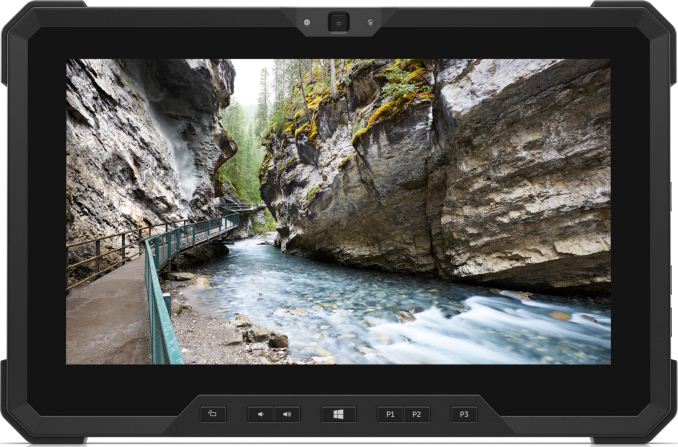
The Dell Latitude 12 tablet comes in the MIL-STD-810G-certified 24-mm thick enclosure made to withstand operating drops, thermal extremes, dust, sand, humidity, blowing rain, vibration, functional shock and all other kinds of physical impact. The slate has operating thermal range from -29°C to 63°C (20°F to 145°F), it can work in hazardous locations and withstand electromagnetic interference (MIL-STD-461F certified). In short, the Latitude 12 can work safely almost everywhere and in almost any circumstances — from a construction site, to a drilling site in the desert, to a battlefield.
Obviously, the rugged tablet is rather heavy (but not that heavy): the new Latitude 12 model 7212 weighs 1.27 kilograms with a 2-cell battery, like a full-fledged laptop. Dell says that the weight of the model 7212 is 27% lower compared to the original model 7202, but does not say how it managed to reduce the weight. Visually, the systems are similar and the new model is compatible with all of its predecessor's accessories. Yet, the Latitude 12 7202 and the Latitude 12 7212 are not completely identical: the new model has a new rigid handle option, it comes with new handles and straps that are easier to install and has a number of other advantages over the previous-gen model. Meanwhile, the optional RGB-backlit keyboard cover with kickstand for the Latitude 12 (also rugged, sealed and made for extremes) will further add weight and cost, if used.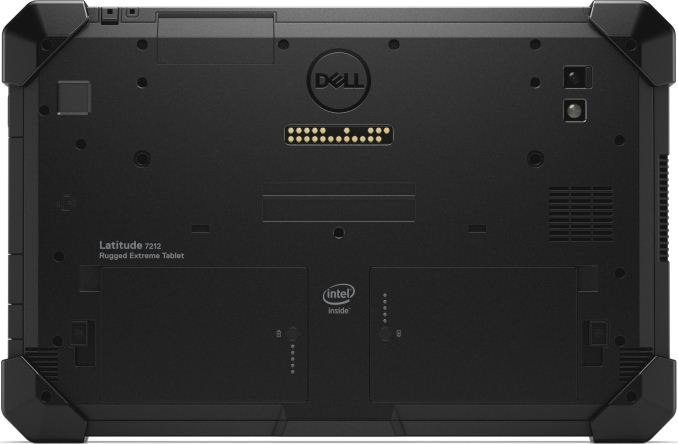
As mentioned above, the Dell Latitude 12 model 7212 is based on Intel’s latest CPUs featuring their Skylake and Kaby Lake microarchitectures. In fact, Dell decided to use dual-core Core i-series Skylake-U and Kaby Lake-U SoCs instead of low-power Broadwell-Y to offer higher performance. Depending on exact SKU, the Latitude 12 7212 will come with 8 GB or 16 GB of LPDDR3 memory, Class 20 or 40 SSDs with 128 GB, 256 GB, 512 GB or 1 TB capacity, optional encryption capabilities,, as well as a 26 Wh or 34 Wh internal battery. All new systems are equipped with 11.6” FHD displays featuring gloved multi-touch, AG/AR/AS/polarizer and etched Gorilla Glass.
Meanwhile the communication capabilities of the Latitude 12 model 7212 are vast. By default, the rugged tablet has an Intel 8265 802.11ac Wi-Fi controller with Bluetooth 4.2, a Qualcomm Snapdragon X7 LTE modem as well as NFC capability. Optionally, the slates can be equipped with a GPS card, Bluetooth 4.2 can be removed and a different LTE modem installed.
Wired I/O features of the Latitude 7212 rugged extreme tablet include USB 3.1 Type-C connector that can be used for charging and external display connectivity, a USB 3.0 Type-A connector, an optional micro RS-232 port, a universal audio jack and so on. The system is also equipped with optional rear and front cameras, a contactless smart card reader as well as a touch fingerprint sensor. For backwards compatibility, the model 7212 also has a regular 4.5-mm power connector. Finally, an optional dock station adds batteries, GbE, two USB 3.0 Type-A ports, an HDMI connector, a D-Sub output, as well as two more RS-232 ports.
When it comes to security, Dell seems to have everything covered too. The system features a fingerprint reader, Dell’s ControlVault advanced authentication, Intel vPro remote management, a TPM 2.0 module, optional SED option for SSDs, NIST SP800-147 secure platform and so on.
Dell’s Latitude 12 7212 will be available shortly starting at $1,899. Rugged tablet dock, keyboard cover with kickstand as well as rugged battery charger will be available separately.Specifications of the Dell Latitude 12 Rugged Extreme Tablet Latitude 12 7212 LCD Diagonal 11.9" Resolution 1920×1080 Features Outdoor-readable display with gloved multi-touch AG/AR/AS/Polarizer and Gorilla Glass CPU Dual-Core 7th Gen Intel Core i5 CPUs (Skylake-U)
Dual-Core 7th Gen Intel Core i3/i5/i7 CPUs (Kaby Lake-U)Graphics Intel HD Graphics 520/620 (24 EUs) RAM 8 GB or 16 GB LPDDR3 Storage 128 GB SATA Class 20 SSD
256 GB SATA Class 20 SSD Opal 2.0 SED
256 GB SATA Class 20 SSD
256 GB PCIe NVMe Class 40 SSD Opal 2.0 SED
512 GB SATA Class 20 SSD Opal 2.0 SED
512 GB SATA Class 20 SSD
512 GB PCIe NVMe Class 40 SSD
1 TB SATA Class 20 SSD
1 TB PCIe NVMe Class 40 SSDWireless Wi-Fi, Bluetooth options Wireless LAN Options:
Intel Dual Band Wireless-AC 8265 with Bluetooth 4.2 + vPro Mobile broadband
Intel Dual Band Wireless-AC 8265 + No Bluetooth 4.2 Wireless Card
Qualcomm QCA61x4A 802.11ac Dual Band (2x2) Wireless Adapter+ Bluetooth 4.1Mobile Broadband
(optional)Qualcomm Snapdragon X7 LTE-A for Win 10 (DW5811e Gobi5000) for Worldwide (Windows 7 and 10 options)
Qualcomm Snapdragon X7 LTE-A for Win 10 (DW5811e Gobi5000) for AT&T (Windows 7 and 10 options)
Qualcomm Snapdragon X7 LTE-A for Win 10 (DW5811e Gobi5000) for Verizon (Windows 7 and 10 options)
Qualcomm Snapdragon X7 LTE-A for Win 10 (DW5811e Gobi5000) for Sprint (Windows 7 and 10 options)
Dell Wireless 5816e multi-mode Gobi 5000 4G LTE WAN Card (Japan/ANZ only)GPS Dedicated u-blox NEO-M8 GPS card Additional Dual RF-passthough (Wi-Fi and mobile broadband), Near field communication (NFC) USB 3.1 1 × USB Type-C Gen 1 3.0 1 × USB 3.0 Type-ACameras Front Front-facing camera Back Rear-facing camera with flash LED Security TPM 2.0, ControlVault™ advanced authentication, Dell Security Tools, Dell Data Protection | Encryption,
Contactless SmartCard reader, optional fingerprint reader and SmartCard readerOther I/O TRRS audio jack, micro RS-232 (optional), POGO, etc. Battery 24 Wh or 26 Wh Dimensions Width 312 mm | 12.3" Depth 203 mm | 8" Thickness 24 mm | 0.96" Weight 1270 grams (tablet) Operating System Microsoft Windows 10 Pro 64 Bit
Microsoft Windows 10 Pro with Windows 7 Professional Downgrade (64 bit) - Skylake CPU requiredRegulatory and Environmental Compliance MIL-STD-810G Transit drop (48”/1.22m; single unit; 26 drops), operating drop (36”/0.91m), blowing
rain, blowing dust, blowing sand, vibration, functional shock, humidity, salt fog, altitude, explosive atmosphere,
thermal extremes, thermal shock, freeze/thaw, tactical standby to operational.Operating thermal range -20°F to 145°F (-29°C to 63°C); Non-operating: -60°F to 160°F (-51°C to 71°C). IEC 60529 ingress protection IP-65 (dust-tight, protected against pressurized water) Hazardous locations ANSI/ISA.12.12.01 certification capable (Class I, Division 2, Groups A, B, C,D),
CAN/CSA C22.2Electromagnetic interference MIL-STD-461F certified Optional Accessories Dell Desktop Dock for the Rugged Tablet,
Dell Dock WD15,
Dell Power Companions,
Kickstand and Rugged RGB Backlit Keyboard cover,
Shoulder Strap,
Soft and Rigid Handle options,
Chest Harness,
Cross Strap, Active Pen,
Backpack Modules,
Dell 24” & 27” Monitors,
Dell Wireless Keyboard and MousePrice Starting at $1899
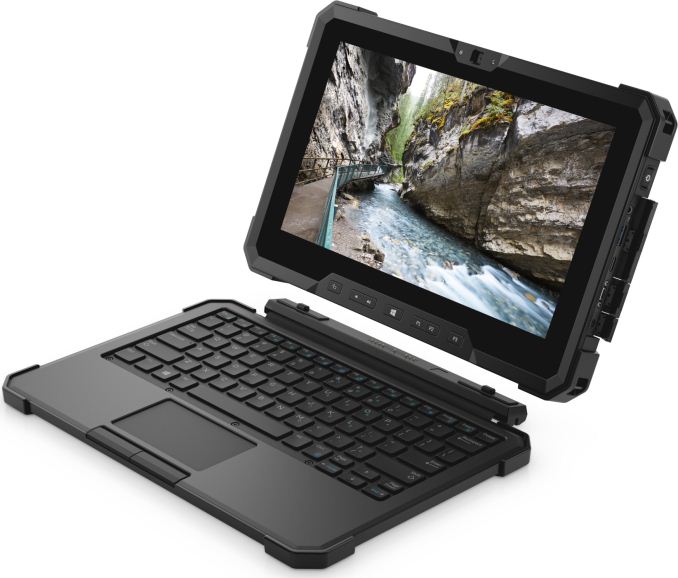
Gallery: Dell Latitude 12 Model 7212





Related Reading:
- Dell Announces Latitude Rugged Extreme 12 and 14 Laptops
- Dell's Latitude Gets Rough and Ready
- Dell Introduces Latitude ST Business Tablet
More...
-
09-08-17, 02:17 PM #7336
Anandtech: Philips Readies Curved Ultra-Wide 492P8 Display: 49”, 32:9, USB-C, Sub-$11
Wrapping up our IFA coverage, at least week's trade show TPV demonstrated a preproduction version of its upcoming ultra-wide (32:9 aspect ratio) 49” Philips display. The 492P8 monitor will have something in common with Samsung’s C49HG90 introduced earlier this year, but it will lack quantum dots and a number of other features. A good news is that it will cost less, at a little over $1000.
Over the past few quarters companies like Philips, LG, Samsung, JapanNext and some other have introduced computer displays with diagonals significantly exceeding 30” – 34”, setting a new trend for ultra large monitors. Separately, ASUS, Dell, Samsung, LG and other have launched LCDs with a 21:9 aspect ratio, setting another trend, this time for ultra-wide monitors. Different suppliers of monitors target their ultra-large LCDs at different audiences, but it is clear that these wide and/or huge displays are not niche products, but represent new market trends. Being one of the largest maker of LCD panels in the world, Samsung recognized both trends early enough and this year introduced the world’s first mass-market monitor with a 49” diagonal and an ultra-wide 32:9 aspect ratio.
Samsung gave the backlighting on its C49HG90 a quantum dot treatment to expand its color space to 95% of the DCI-P3, while also equipping it with AMD’s FreeSync 2 technology and increasing its maximum refresh rate to 144 Hz in order to address the high end of the gaming market. At present, the display is indeed one of the most advanced and expensive ($1499) gaming monitors in the industry. Meanwhile, gamers are not the only category of users, who can benefit from a massive ultra-wide screen. There are users of multi-monitor configurations in finance, engineering, design, audio/video production and other industries, who would gladly swap two displays for one ultra-wide one or four LCDs for two. Apparently, Philips plans to address these industries with its upcoming 492P8 monitor. The company confirms that Samsung is the supplier of its 49" 32:9 panel, but given the fact that this is a rather niche product (there are not a lot of people who have enough space for a 49" monitor on their desks at home or in office), it is highly likely that Samsung will remain the only producer of such panels for a while.
As the name implies, the Philips 492P8 belongs to the brand’s P-line offerings aimed at professionals. Although Philips has demonstrated the 492P8 in action at IFA, the company is not releasing the monitor's complete specifications just yet, as some things may change between the current prototype and the final product. Nonetheless, the basic details about the display panel itself are already known: a 3840x1080 resolution, up to 600 nits brightness, up to 5000:1 contrast ratio, 178º/178º vertical/horizontal viewing angles, 1800R curvature and so on. Unlike Samsung, Philips will not be using QLED backlighting to improve color gamut, citing the different target audiences. For the same reason, peak brightness could be limited and since we do not have the final specs of the 492P8 at hand, we'd rather not speculate about the specifications of the monitor itself.
Connectivity capabilities of the Philips 492P8 look rather good: the monitor has a DisplayPort, an HDMI port, a USB Type-C input, a D-Sub connector, as well as a built-in dual-port USB 3.0 and an Ethernet hub (the USB-C acts like an upstream port for both). The presence of the D-Sub looks a bit odd, but it could be used to connect an additional computer and display its output in picture-by-picture (PBP) or picture-in-picture (PiP) mode. In addition, there are two 3.5-mm audio connectors for headphones and a microphone.
Philips plans to bring the 492P8 to the market sometimes in Q2 next year and intends to sell the unit for about €899 ($1077). Keeping in mind that we are at least a half of a year away from the launch of the 492P8, some specs and/or MSRP may change due to various circumstances.Philips Ultra-Wide 49" Display 492P8 Panel 49" VA Native Resolution 3840 × 1080 Maximum Refresh Rate unknown Response Time unknown Brightness up to 600 cd/m² (?) Contrast up to 5000:1 (?) Backlighting LED Viewing Angles 178°/178° horizontal/vertical Curvature 1800R Aspect Ratio 32:9 (3.56:1) Color Gamut sRGB Dynamic Refresh Rate Tech unknown Pixel Pitch 0.312 mm² Pixel Density 81.41 PPI Inputs 1 × DP
1 × D-Sub
2 × HDMIAudio 3.5 mm input and output USB Hub 2 × USB 3.0 Type-A connectors Ethernet 1 GbE port MSRP €899/$1077 (preliminary)
Related Reading:
- Samsung Announces First Freesync 2 Monitors: CHG70 & CHG90 - Quantum Dots, Up to 49”, 144 Hz, DCI-P3
- Samsung Investing in 3840x1080 and 3840x1200 Curved Displays at 144 Hz
- Philips Demos 328P8K: 8K UHD LCD with Webcam, Docking, Coming in 2018
- Philips Begins to Sell 43” 4K IPS BDM4350UC Display for $799
- Philips BDM4037UW Goes on Sale: 40 Inch 4K Curved Display for $800
- LG 43UD79-B Launched: 42.5-inch 4K IPS with FreeSync
More...
-
09-08-17, 03:37 PM #7337
Anandtech: G.Skill Ups the Ante on Memory Speed and Voltage: 16 GB DDR4-4600 1.5v Kit
G.Skill on Friday introduced its fastest dual-channel memory kit designed specifically for Intel’s Kaby Lake-X processors and Intel’s X299 HEDT platforms. The new Trident Z DDR4-4600 DIMMs not only boast the highest officially supported DDR4 transfer rate in the industry to date, but are also among the first to use 1.5 Volts to hit that milestone.
The new extreme Trident Z DDR4 memory modules, as G.Skill calls them, are based on Samsung’s famous 8 Gb B-die memory ICs produced on their 20 nm fabrication process. Trident says that to build its F4-4600C19-8GTZ 8 GB DIMMs rated for DDR4-4600 with CL19 23-23-43 operation, it had to cherry pick DRAMs with the highest frequency potential and increase the voltage of the memory modules all the way to 1.5 Volts. This is a whopping 25% increase over DDR4 standard's default voltage of 1.2v, and in AT's collective memory we can't recall the last time we saw a memory kit ship with a voltage so far over the standard. To G.Skill's credit they are now pushing DDR4 well above the specification's original maximum 3200 MT/sec transfer rate, so the payoff is clearly there, but it's also clear that the company is pushing current DDR4 technology and Samsung's B-dies to their limits.
Such a high voltage is (obviously) not impossible to work with, but it does come with some challenges both for users and the manufacturer. The biggest is sheer power consumption – remember that power consumption increases with the square of the voltage – so a 25% voltage increase will increase the power consumption of these DIMMs by even more than that. G.Skill claims that the DIMMs do not have any overheating issues and it had run loads of burn-in tests to ensure stability and reliability, but these are top-of-the-range enthusiast-class products that will need sufficient cooling. Meanwhile on the manufacturing side, G.Skill not only needs to heavily bin chips to find those that can operate at these speeds, but then build a complete DIMM that can handle the frequency and the power delivery needs. Similarly, a solid motherboard is necessary to handle these speeds on its end, as well as the higher power delivery.

G.Skill has validated stable operation of its “extreme” Trident Z dual-channel kit at 4600 MT/s on Intel’s Core i7-7740X (Kaby Lake-X) CPU and ASRock’s X299 OC Formula motherboard. The latter was designed by ASRock in cooperation with Nick Shih, a well-known overclocker, and it only has four memory slots in order to minimize interference and ensure a “clean” power supply. The modules come with XMP 2.0 SPD profiles that will simplify their set up on all Intel X299 platforms, but keep in mind that the kit is intended only for dual-channel operation and G.Skill tested it using a particular hardware config.
G.Skill will offer its DDR4-4600/CL19 kit with all black and grey with white aluminum heatsinks. The company is not going to offer an RGB LED-equipped version of these DDR4-4600 modules (at least initially) because installing LEDs would affect power supply of the modules and therefore their frequency potential.G.Skill's Trident Z Memory for Intel's X299 Platform Speed CL Timing Voltage Kit Configuration Kit Capacity Family DDR4-3600 CL16 16-16-36 1.35 V 4×8 GB
8×8 GB32 GB
64 GBTrident Z
Trident Z RGBCL17 19-19-39 4×16 GB
8×16 GB64 GB
128 GBDDR4-3733 CL17 17-17-37 4×8 GB
8×8 GB32 GB
64 GBCL18 19-19-39 4×16 GB
8×16 GB64 GB
128 GBDDR4-3800 CL18 18-18-38 4×8 GB
8×8 GB32 GB
64 GBCL19 19-19-39 4×16 GB
8×16 GB64 GB
128 GBDDR4-4000 CL18 19-19-39 4×8 GB
8×8 GB32 GB
64 GBDDR4-4200 CL19 19-19-39 1.4 V 8×8 GB 64 GB Trident Z DDR4-4400 CL19 19-19-39 1.4 V (?) 2×8 GB 16 GB Trident Z Black DDR4-4600 CL19 23-23-43 1.5 V 2×8 GB 16 GB Trident Z
G.Skill plans to start selling its 16 GB (8 GB×2) DDR4-4600 CL19 23-23-43 memory kit late this month. The company traditionally does not touch upon pricing of the set, but since this is an exclusive and heavily binned product, it is logical to expect it to be expensive.

Related Reading:
- G.Skill Announces Quad-Channel DDR4-4200 Kit for Intel Skylake-X CPUs
- DRAM and Motherboard Makers Demonstrate Quad-Channel DDR4-4000+ Operation
- G.Skill Announces 16 GB DDR4-4333 Memory Kit for Intel Kaby Lake CPUs
- G.Skill Announces Trident Z RGB DDR4 Kits with 16 GB Modules, Up to 128 GB
- AMD Announces Ryzen AGESA 1.0.0.6 Update: Enables Memory Clocks Up To DDR4-4000
- Corsair Vengeance RGB DDR4 Memory Modules with LEDs Now on Sale
More...
-
09-09-17, 08:21 AM #7338
Anandtech: Toshiba's 8 TB X300 HDD Now Available: 7200 RPM Drive For Under $260
Toshiba has started to sell a new, 8 TB version of its X300 3.5” desktop hard drive. The new X300 8 TB hard drive relies on a specially developed platform with enterprise features that promises to enable extended reliability and has two performance-optimizing technologies. However what is especially noteworthy is that the price of this 7200 rpm-class HDD is considerably lower than the price of competing 7200 rpm-class 8 TB PMR internal hard drives.
The Toshiba X300 family of hard drives now consists of 4 TB, 5 TB, 6 TB and 8 TB models that have 7200 RPM spindle speed and 128 MB cache. Toshiba is not disclosing the capacity of the platters that it uses for the 8 TB HDD, but only says that they feature perpendicular magnetic recording and thus the drive has predictable performance and behavior. Apart from increased capacities compared to Toshiba’s previous-gen P300-series (aka DT01ACA***) hard drives for desktops, the X300 lineup boasts higher performance and new features designed to improve the reliability of the HDDs.
When it comes to the performance of the 8 TB model in particular, the drive uses platters with a higher areal density than its predecessors, as well as a 128 MB cache (up from 64 MB on P300-series drives). While Toshiba is not confirming this, based on what we know about the X300 series the 8 TB model most likely uses six 1.33 TB PMR platters, as opposed to 1 TB PMR platters in the other models. Consequently the 8 TB model has a higher areal density than the other X300 drives, which means that its sequential read/write performance should also be higher. Furthermore, in a new feature that appears to be unique to the 8 TB model, the cache of the drive features a self-contained cache algorithm with on-board buffer management, which is said to improve the cache allocation of read and write operations to increase performance..
Toshiba is not disclosing exact performance figures for the 8 TB X300, but the company’s N300 8 TB HDD launched earlier this year and and is believed to be based on the same platters. Taking a look at that drive we find a maximum sustained transfer rate of around 240 MB/s, and we expect that the 8TB X300 is in the same ballpark.
Meanwhile the similarities between the 8 TB X300 and higher-end HDDs for NAS applications don’t end with just their performance. The new client drives rely on a platform that attaches the motor both to the top and to the bottom of the HDD to reduce system-induced vibrations, which improves the drive's reliability and tracking accuracy for higher performance. Back in the day, top and bottom attached spindles were only used on enterprise-class HDDs, but in the recent years higher-end desktop drives also inherited the feature, partly because they use the same physical platform (albeit, with different heads, set of sensors, firmware, etc.). In addition, the X300 drives have integrated shock sensors that help the HDD to protect platters against scratches and other negative effects of shocks.Toshiba X300-Series HDDs HDWF180XZSTA HDWE160XZSTA HDWE150XZSTA HDWE140XZSTA Capacity 8 TB 6 TB 5 TB 4 TB RPM 7200 RPM Interface SATA 6 Gbps DRAM Cache 128 MB
(with performance enhancing algorithm)128 MB Average Latency 4.17 ms MTBF 1 million hours (?) Rated Annual Workload (read and write) 180 TB/year (?) Warranty 2 years Price $254.99 $189.99 $159.99 $132.99
Toshiba’s 8 TB X300 HDD is currently available from Newegg for $254.99. In fact, the price of the hard drive is one of its undisputable trumps because it is cheaper than any other 7200 rpm-class PMR hard drives of the same capacity. This includes not only task-specific drive categories such as enterprise, NAS, workstations, but also general desktop drives, which as of late have carried higher MSRPs. As a result, Toshiba has a chance to lure customers with a combination of high performance and reliability in a desktop drive with a relatively affordable price.
Related Reading:Brief Price Comparison of Consumer and NAS 8 TB PMR HDDs at Newegg Toshiba
X300
HDWF180XZSTAToshiba
N300
HDWN180XZSTASeagate
BarraCuda_Pro
ST8000DM005WD
Red Pro
WD8001FFWXWD
Red
WD80EFZXWD
WD80EZZXCapacity 8 TB RPM 7200 RPM 5400 RPM Interface SATA 6 Gbps DRAM Cache 128 MB with performance enhancing algorithm 128 MB 256 MB 128 MB Rated Annual Workload (read and write) 180 TB 300 TB unknown Warranty 2 years 5 years 2 years Price Total $254.99 $279.99 $320.24 $329.99 $279.99 $230.01 per GB $0.0318 $0.035 $0.04 $0.0412 $0.035 $0.0287
- Toshiba Launches N300 HDDs for NAS: Up to 8 TB, Up to 240 MB/s
- Toshiba Announces MN-Series HDDs: Up to 8 TB
- Toshiba Launches MG05ACA Enterprise HDDs: 8 TB, 7200 RPM, NAND Cache
More...
-
09-11-17, 08:26 AM #7339
Anandtech: ASRock Announces the X299 OC Formula Motherboard
Back in May of this year, we saw our first glimpse of the X299 OC Formula, ASRock’s to-be high-end overclocking focused motherboard. In the past couple of generations, the OC Formula line was black and yellow. For X299 it has changed to black with some gray. Though it looks like most other X299 boards on the shelves, ASRock positions it as “…ideally focused on overclocking exclusively, without any other useless features, designs or gimmicks.”
One major change to previous OC Formula (OCF) boards of the past is the reduction down to one memory slot per channel. Most X299 based boards have eight slots; while the X299 OCF has four. Since the board is aimed towards overclocking, previous boards have shown one memory slot per channel has overclocking benefits, so the transition is made on the X299 version. Most users aren’t looking for the full 128GB capacity anyway, as this can put a ceiling on how fast your ram runs. ASRock states the board design aids in stability and reaching higher memory speeds, with up to DDR4 4600 (OC) officially supported out of the box, which is among the highest we have seen so far for X299. ASRock’s own in-house overclocker Nick Shih, who has helped design the OCF line for many years, has achieved DDR4-4800 with only air cooling on some high-end premium and binned memory. The X299 OC Formula will also support soon-to-be-announced DDR4-4500 XMP profile modules that will appear on the market soon.
As with past OC Formula boards, the X299 version carries over the ASRock Formula Kits (Power Kit, Connector Kit, and Cooling Kit). The 'kits' are marketing speak for features found on the board. Items such as the all DigiPower VRM design with Dr. MOS MOSFETs, a Hi-Density power 8-pin EPS connector, 15µ gold contacts, 8-layer 2oz copper PCB and the heat pipe configuration for the large VRM heatsinks, are all part of that feature package. ASRock says this heat sink configuration can supports up to 450W from the VRMs with proper airflow. The same 13 phase VRM found on the X299 Taichi and the Gaming i9 makes its way to the OC Formula as well.
Other overclocking features include an LN2 mode switch (disables CPU thermal protection, enables additional OC features), Rapid OC buttons to manually adjust the CPU ratio, the BCLK frequency, or the CPU voltages directly on the board. There are also PCIe on/off switches to disable PCIe slots, and the retry/reset/BFG button set for quick access to different types of restarts and boots. These features are found in the upper right-hand corner of the board above the ATX power. For those not wanting to manually overclock and play, the UEFI also has several of Nick's preset overclocking profiles. These range from 4 GHz all the way to extreme overclocking (liquid nitrogen, LN2) profiles. If BCLK adjustment is needed, the X299 OCF also comes with an additional external base clock generator, the Hyper BCLK Engine III. It is designed to support PCIe frequency overclocking and a wider range of BCLK frequency adjustments.
Outside of overclocking centered features, the board supports 4-Way SLI and Crossfire in its five full-length PCIe slots, has dual PCIe 3.0 x4 M.2 slots supporting both PCIe and SATA based M.2 modules, eight SATA ports, dual Intel Gigabit LAN ports, and uses the latest Realtek ALC1220 audio codec with ASRock’s Purity Sound 4 software. For those looking for RGB LEDs, the X299 OCF does have them under the PCH heatsink only.
Pricing or details on availability were not listed at the time of publication.ASRock X299 OC Formula Warranty Period 3 Years Product Page Link Price N/A Size ATX CPU Interface LGA2066 Chipset Intel X299 Memory Slots (DDR4) Four DDR4
Supporting 64GB
Quad Channel
Up to 4600 MHz (OC)Network Connectivity 1 x Intel I219V GbE
1 x Intel I211AT GbEOnboard Audio Realtek ALC1220 PCIe Slots for Graphics (from CPU) 5 x PCIe 3.0
44 Lane CPU - x16/x0/x0/x16/x8 or x8/x8/x8/x8/x8
28 Lane - x16/x0/x0/x8/x4 or x8/x8/x0/x8/x4
16 Lane - x16/x0/x0/x0/x4 or x8/x0/x0/x8/x4PCIe Slots for Other (from PCH) 1 x PCIe 3.0 x1
1 x PCIe 3.0 x4Onboard SATA 6 x SATA3 - Supports RAID 0/1/5/10
2 x SATA3 - Supports NCQ, AHCI, and Hot Plug via Asmedia ASM1061Onboard SATA Express None Onboard M.2 2 x PCIe 3.0 x4 (SATA also supported) Onboard U.2 None USB 3.1 Gen 2
aka USB 3.1 (10 Gbps)1 x Type-A (ASMedia ASM3142)
1 x Type-C (ASMedia ASM3142)USB 3.1 Gen 1?
aka USB 3.0 (5 Gbps)4 x Rear Panel
2 x via headers (ASM1074 Hub)USB 2.0 2 x Rear Panel
4 x via headersPower Connectors 1 x 24-pin ATX
1 x 8-pin CPU
1 x 4-pin CPU (Optional)Fan Headers 1 x CPU (4-pin)
1 x CPU Opt/Water Pump
2 x Chassis Fan
1 x Chassis Opt/Water PumpIO Panel 1 x PS/2 Mouse/Keyboard Port
1 x Optical SPDIF Out Port
2 x USB 2.0 Ports
1 x USB 3.1 Type-A Port (10 Gb/s)
1 x USB 3.1 Type-C Port (10 Gb/s)
4 x USB 3.0 Ports
2 x RJ-45 LAN Ports
1 x BIOS Flashback Switch
1 x Clear CMOS Switch
HD Audio Jacks
Gallery: ASRock X299 OC Formula
_thumb.png)
_thumb.png)
Related Reading- The Intel Skylake-X Review: Core i9 7900X, i7 7820X, and i7 7800X tested
- The Intel Kaby Lake-X i7 7740X and i5 7640X Review: The New Single-Threaded Champion, OC to 5GHz
- MSI Announces the X299 XPower Gaming AC Motherboard: Five M.2 Slots
- ASRock Announces X299 Professional Gaming i8 with 3-Way Multi-GPU, 10Gb Ethernet, & Wi-Fi
More...
-
09-11-17, 10:59 AM #7340
Anandtech: Logitech Launches the MX Ergo Trackball: Bringing Trackballs into 2017
Logitech is introducing its first new trackball in years. The MX Ergo trackball claims improved precision compared to its predecessors, as well as eight buttons combining modern features with an older use model. The device is also one of the first products by Logitech that supports the company’s Flow technology that enables seamless switching and file sharing between different systems.
Trackball History 101
The trackball was invented in 1947, decades before mice and personal computers, for the British Royal Navy’s command, control, and coordination system known as Comprehensive Display System (CDS). In fact, a rolling ball along with four disks to pick up motion were used both for early trackballs and for early mice. However, mice were chosen by Apple, Microsoft, Xerox and others for their programs and computers featuring GUI in the late 1970s and the early 1980s possibly because of more intuitive design. Meanwhile, rolling balls inside mice were not always optimal for precision and other reasons, which is why trackballs became relatively popular in the eighties and the nineties primarily among graphics designers. After both mice and trackballs switched to optical tracking technology in the late 1990s to early 2000s, advantages of trackballs somewhat eroded and their adoption diminished. Nonetheless, there are loyal trackball users who continue to operate them instead of other tracking devices either for personal efficiency, comfort, or nostalgia. Only two main companies produce trackballs nowadays: Logitech and Kensington, with Logitech introducing its first new trackball in many years.
The Logitech MX Ergo (For Right-Handers)
The Logitech MX Ergo looks like a huge mouse, except it has a ball which has to be rotated by a big digit. As the 'Ergo' name implies, the ergonomics of the trackball can be adjusted. This is achieved by increasing the angle of the device from 0 to 20 degrees, just like the precision of the optical tracking, which varies from 320 dpi to 440 dpi. The device has eight buttons, some of which can be reprogrammed. The latest trackball also comes with an integrated 500 mAh Li-Po battery that can work for 'days or months depending on usage model'.
The new MX Ergo trackball from Logitech can use the company’s Unify wireless receiver (as well as Bluetooth) to connect to PCs. Moreover, just like Logitech’s latest mice, the MX Ergo supports the company’s Flow technology that allows to simultaneously control two computers (Macs and/or Windows) and automatically switch between them by moving the cursor to the edge of the screen. In addition, the Flow allows transferring files between two systems wirelessly using Wi-Fi or Ethernet networks.
The Logitech MX Ergo trackball mouse will be available in the U.S. directly from the company, and from its retail partners starting later this month, for $99.99. Pricing and availability in other countries will vary. No word if a left-handed version will enter the market.
Gallery: Logitech MX Ergo Trackball





Related Reading- Logitech Launches G603 ‘Lightspeed’: 12,000 DPI Hero Sensor, 1 ms Polling, 500 Hrs Battery
- Logitech Launches G203 Prodigy Gaming Mouse with A New 6000 DPI Sensor
- Logitech Announces The Ambidextrous G900 Chaos Spectrum Gaming Mouse
- Logitech Announces The CRAFT Keyboard With Creative Dial Integration
- Interacting with HTPCs: IOGEAR and SIIG Options Reviewed
- Interacting with HTPCs: Adesso Keyboard Options Reviewed
- Interacting with HTPCs: Logitech and Perixx Options Reviewed
More...
Thread Information
Users Browsing this Thread
There are currently 8 users browsing this thread. (0 members and 8 guests)




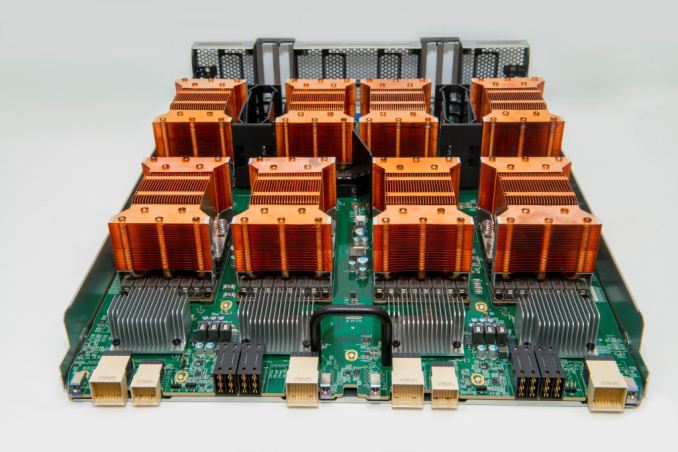
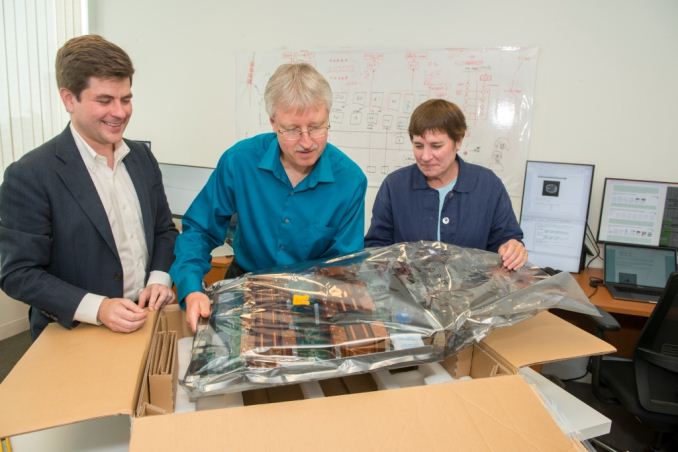

 Quote
Quote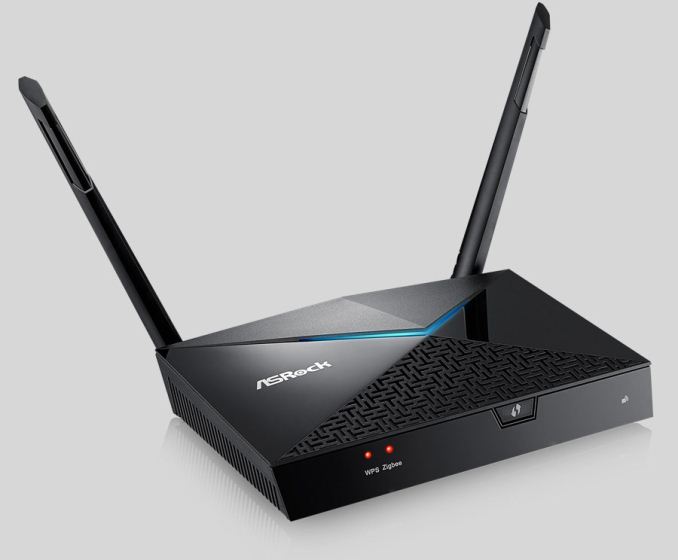
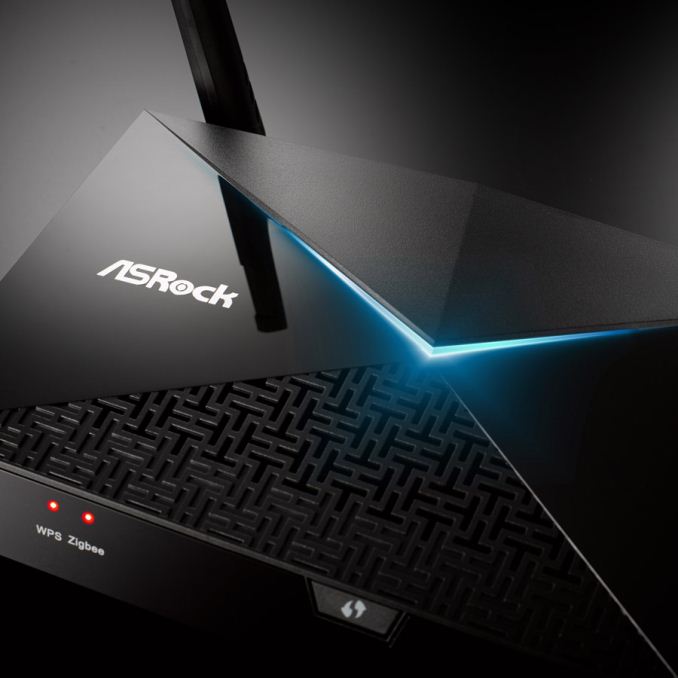
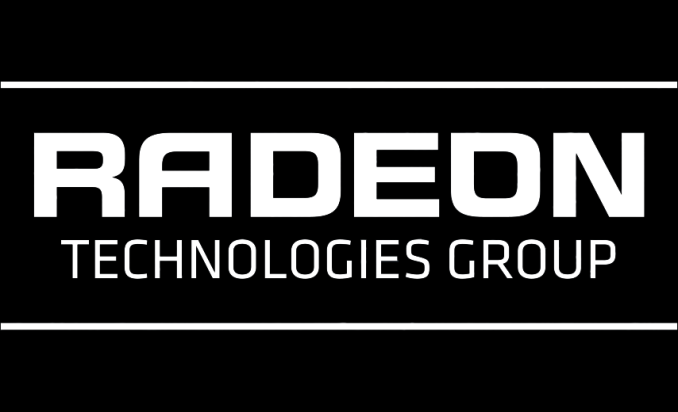


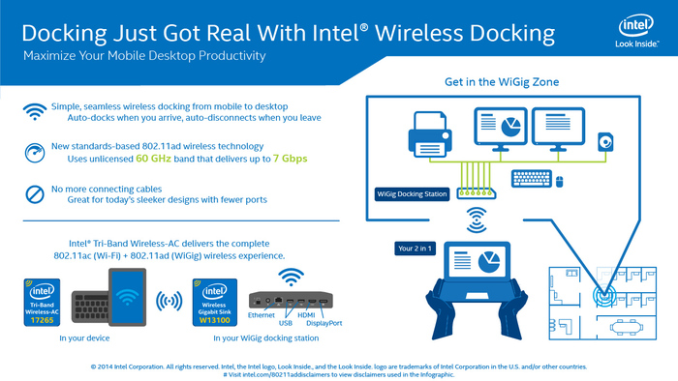
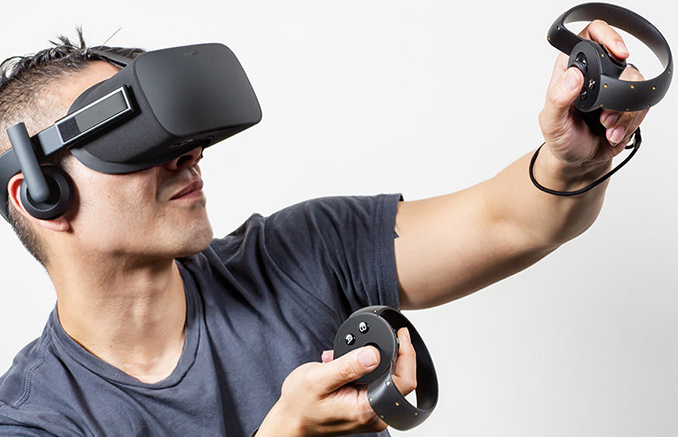



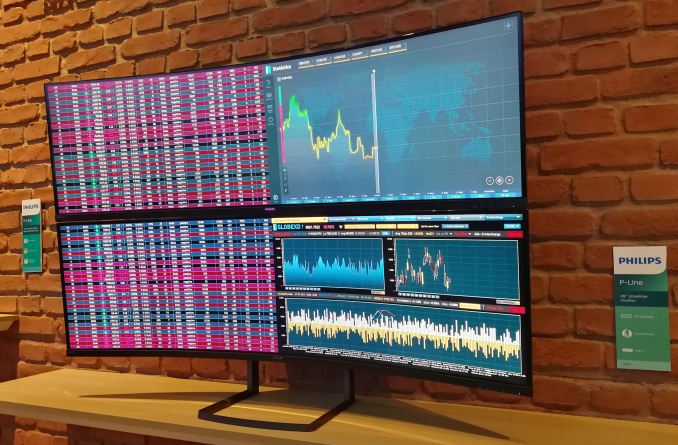
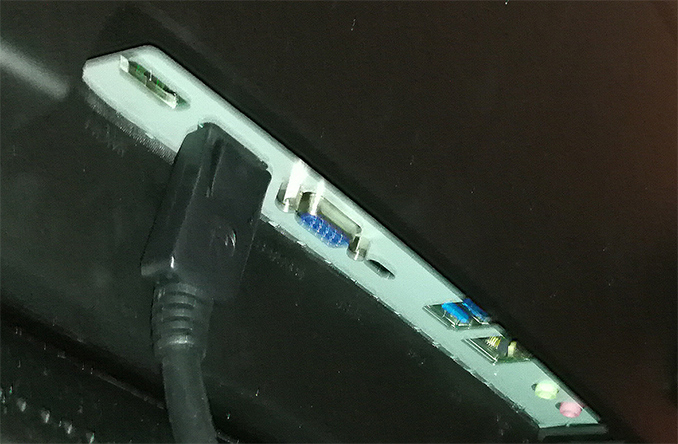
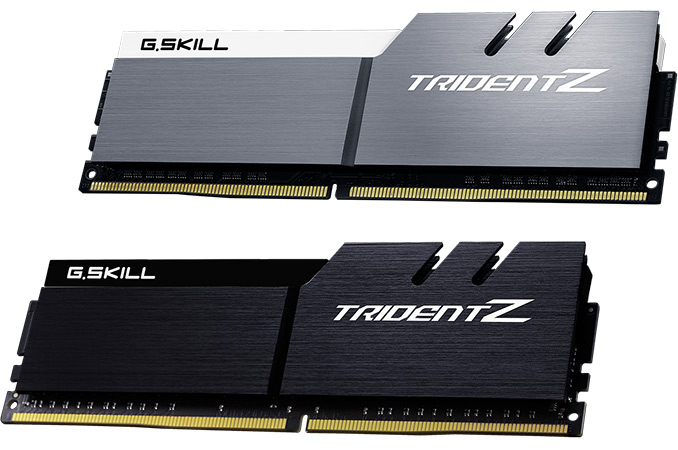

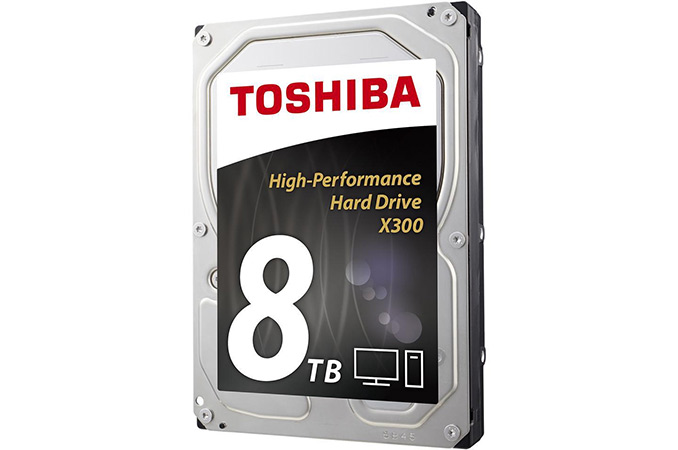
_575px.png)
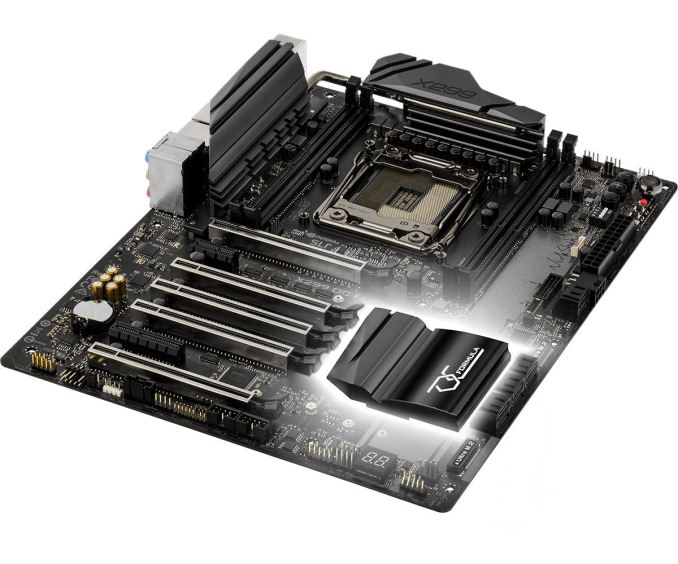
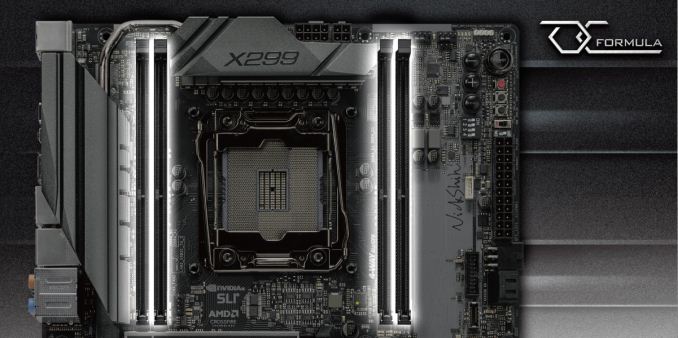
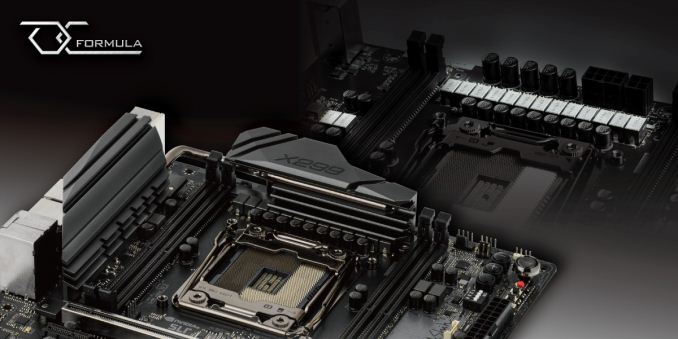
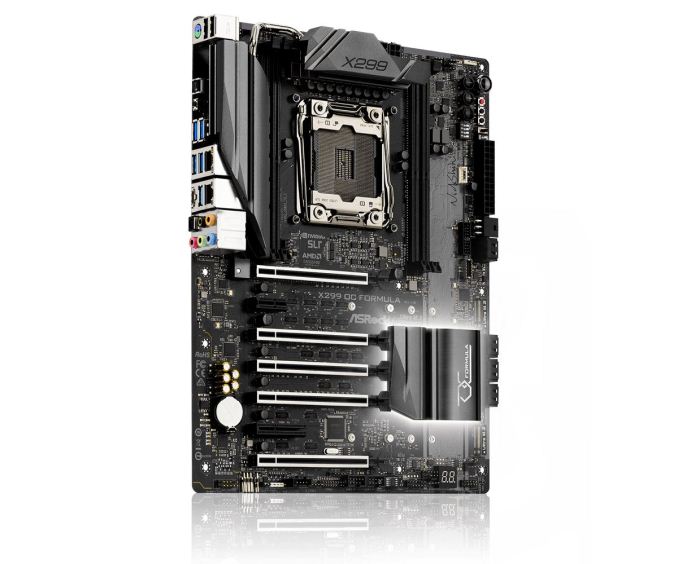
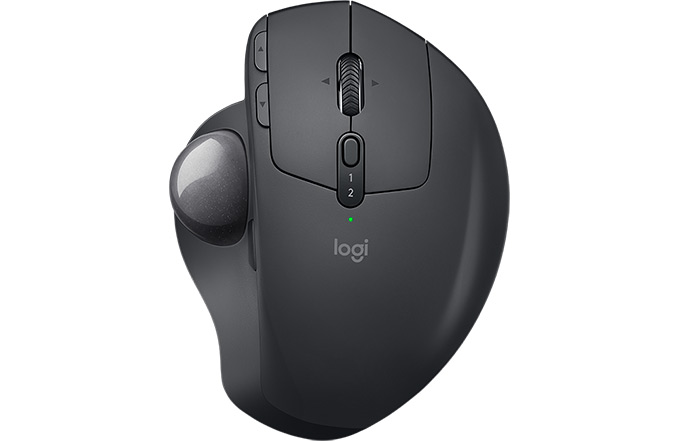
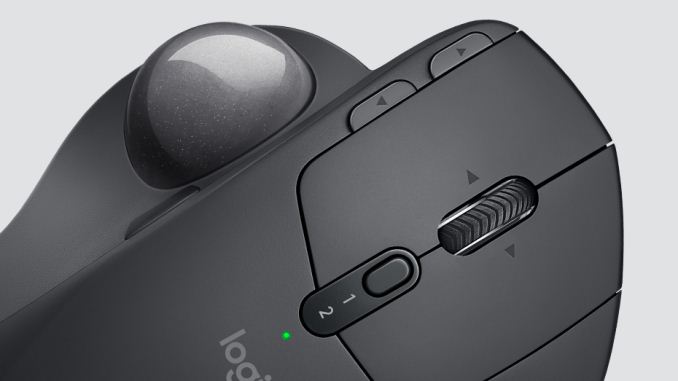
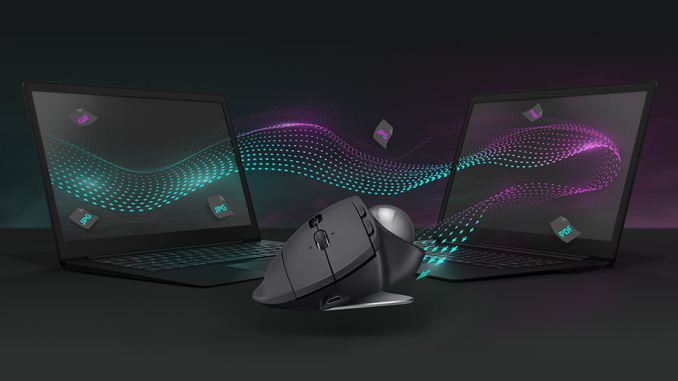
















Bookmarks